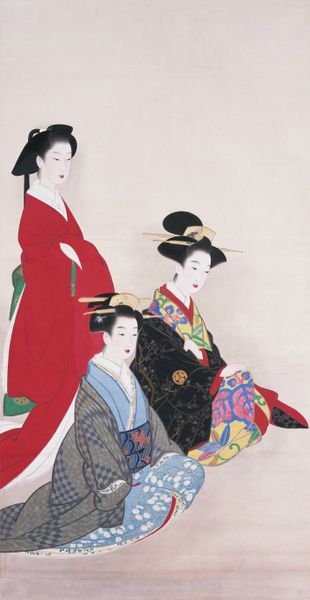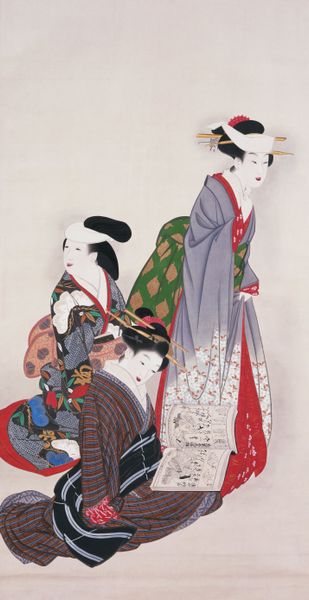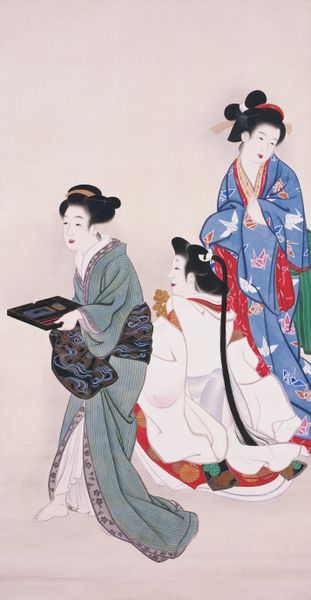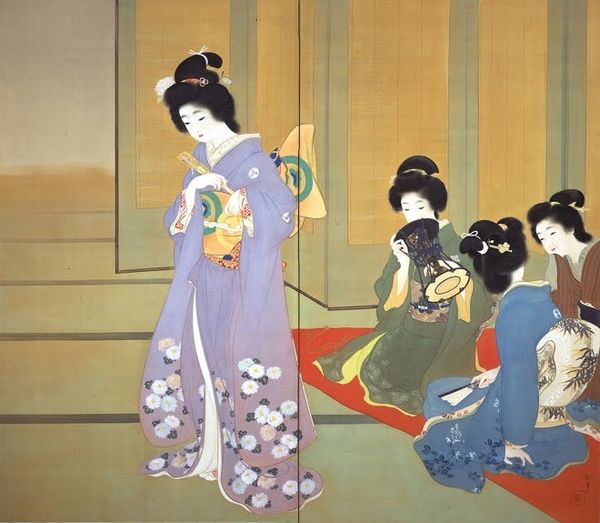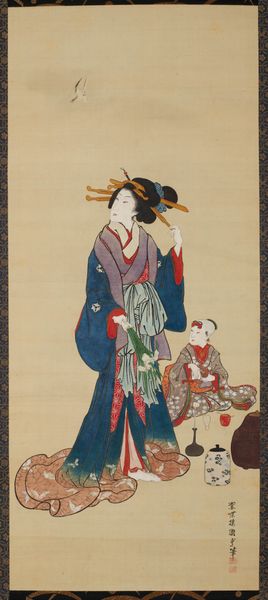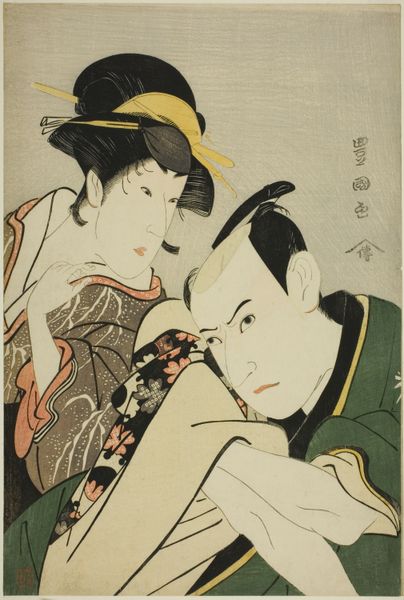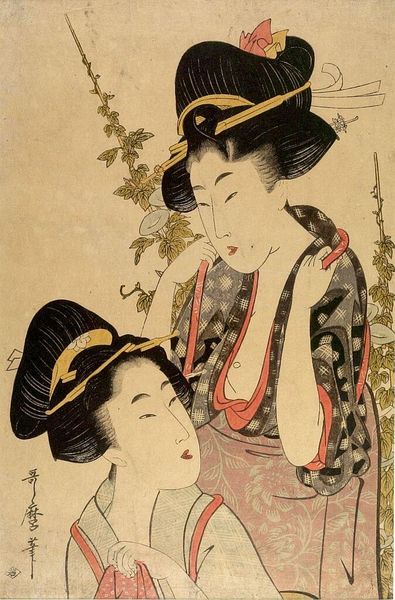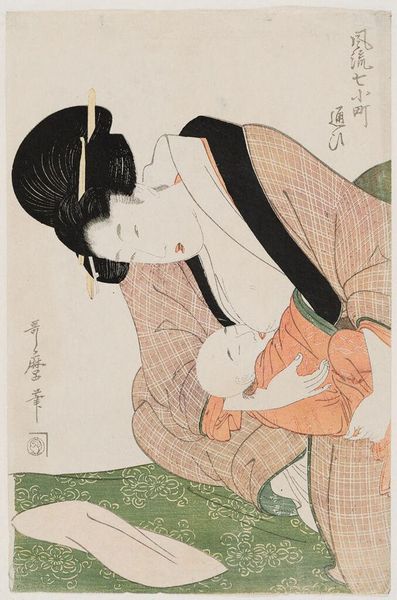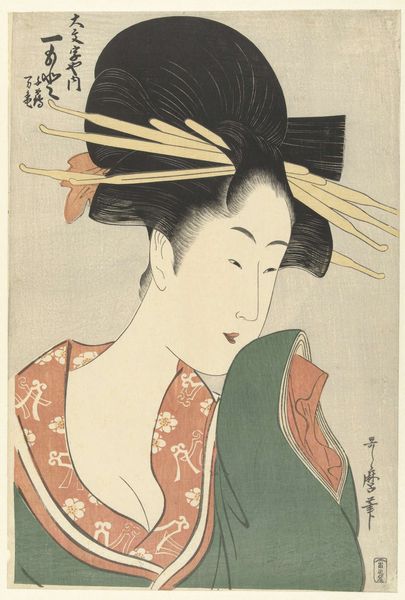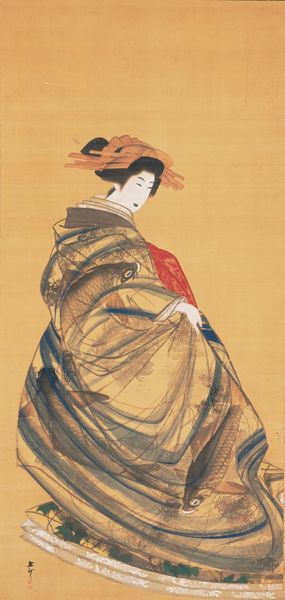
hanging-scroll, ink
#
portrait
#
caricature
#
green tone
#
ukiyo-e
#
japan
#
figuration
#
hanging-scroll
#
ink
#
genre-painting
Dimensions: 70 1/8 × 36 5/8 in. (178.12 × 93.03 cm) (image)86 3/4 × 42 1/2 in. (220.35 × 107.95 cm) (mount)
Copyright: Public Domain
Editor: This hanging scroll, "Women in the Demimonde," is by Yamaguchi Soken, dating back to the 19th century. It’s done in ink, and seeing it makes me feel like I'm peeking into a secret, serene world. What's your take on this piece? Curator: Ah, a glimpse into a floating world, isn't it? The "Demimonde," that blurry space between polite society and something a little more…shall we say, untamed. I see reflections of societal boundaries in their painted faces. Do you notice how they're arranged? Editor: Yes, one standing and the other two seated almost as if composing some sort of pyramid of beauty and grace. It also reminds me of Kabuki actors. Curator: Precisely. There's a performative element to it, wouldn’t you agree? The women’s attire are so carefully observed, a silent story that is whispered through color and line, a fleeting moment caught forever. What does that hint of caricature suggest to you? Editor: Maybe it points to the subtle satire that sometimes pops up in ukiyo-e prints? Is it a respectful portrait or slightly mocking? Curator: Or both? It makes you think, right? It is in those tensions that truth often resides. Much like life, where sorrow and joy waltz together on the same stage. Soken isn't just showing us; he's making us question. Editor: This has shifted my perception. Now I see it less as a simple genre scene and more of an invitation to think critically. Curator: And that, my dear, is the heart of art—to see the world through another's eyes and, perhaps, glimpse a bit of yourself in the process.
Comments
minneapolisinstituteofart almost 2 years ago
⋮
In the Edo period, the material and design of kimono were strictly regulated by the government along class lines, such that class and occupation were identifiable by costumes and hairstyles. Here (from left to right) are ladies of the warrior class, wives of merchants, young maidens, working girls, and women in the demimonde. Soken’s extraordinary brush control and use of pigments can be seen in the delicate hairlines and the texture of complexions and make-up. The son of a kimono merchant, he depicted magnificent kimono with delicate folds suggesting the body under the fabric.
Join the conversation
Join millions of artists and users on Artera today and experience the ultimate creative platform.
